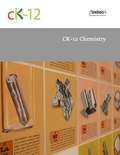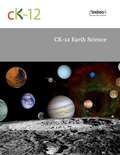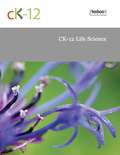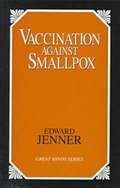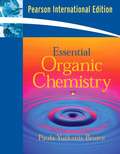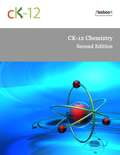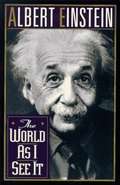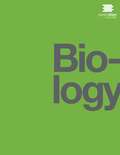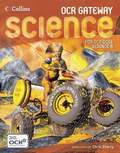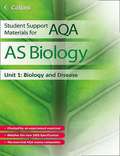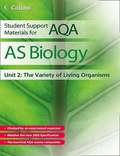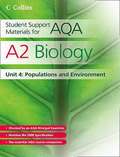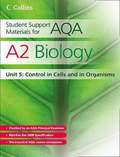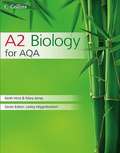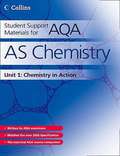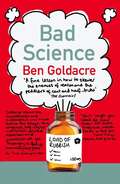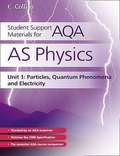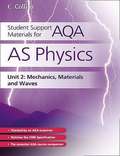- Table View
- List View
القانون في الطب 2
by ابن سينااعلم أن المرارة كيس معلّق من الكبد إلى ناحية المعدة من طبقة واحدة عصبانية ولها ضمّ إلى الكبد ومجرى فيه يجذب الخلط الرقيق الموافق لها والمرار الأصفر ويتصل هذا المجرى بنفس الكبد والعروق التي فيها يتكون الدم وله هناك شعب كثيرة غائصة وإن كان مدخل عمودها من التقعير والفم ومجرى إلى ناحية المعدة. والأمعاء ترسل فيه إلى ناحيتهما فضل الصفراء على ما ذكرناه في الكتاب الأول. وهذا المجرى يتصل أكثر شعبه بالاثني عشري وربما اتصل شيء صغير منه بأسفل المعدة وربما وقع الأمر بالضد فصار الأكبر المتصل بالوعاء الأغلظ إلى أسفل المعدة والأصغر إلى الاثني عشري. وفي أكثر الناس هو مجرى واحد متصل بالاثني عشري. وأما مدخل الأنبوبة المصاصة للمرارة في المرارة فقريب من مدخل أنبوبة المثانة في المثانة. ومن عادة الأطباء الأقدمين أن يسموا المرار الكيس الأصغر كما أنه من عادتهم أن يسموا المثانة الكيس الأكبر ومن المنافع في خلقة المرارة تنقية الكبد من الفضل الرغوي وأيضاً تسخينها كالوقود تحت القدر وأيضاً تلطيف الدم وتحليل الفضول وأيضاً تحريك البراز وتنظيف الأمعاء وشدّ ما يسترخي من العضل حوله وإنما لم يخلق في الأكثر للمرارة سبيل إلى المعدة لتغسل رطوباتها بالمرة كما تغسل بها في رطوبات الأمعاء لأن المعدة تتأذى بذلك وتغثّي ويفسد الهضم فيها بما يخالط الغذاء من خلط رديء ويأتيها من العرق الضارب. وللعصبة التي تتصل بالكبد شعبتان صغيرتان جداً والمرارة كالمثانة طبقة واحدة مؤلفة من أصناف الليف الثلاثة وإذا لم تجذب المرارة المرار أو جذبت فلم تستنق عنه حدثت آفات فإن الصفراء إذا احتبست فوق المرارة أو رمت الكبد وأورثت اليرقان وربما عفنت وأحدثت حميات رديئة. وإذا سالت إلى أعضاء البول بإفراط قرحت وإذا سالت إلى عضو ما أحدثت الحمرة والنملة وإذا دبت في البدن كله ساكنة غير هائجة أحدثت اليرقان وإذا سالت عن المرارة إلى الأمعاء بإفراط أورثت الإسهال المراري والسحج.
CK-12 Chemistry
by Ck-12 FoundationCK-12 Foundation's Chemistry FlexBook Covers the following chapters: The Science of Chemistry- scientific method, history, matter, energy. Chemistry: A Physical Science- measurement, formulas. Chemistry in the Laboratory- qualitative vs. quantitative observation. The Atomic Theory- atomic model from Dalton to Rutherford. The Bohr Model of the Atom- electromagnetic radiation, atomic spectra & Bohr model. Quantum Mechanics Model of the Atom- energy and standing waves, Heisenberg's uncertainty principle, Schrödinger's equation. Electron Configurations for Atoms- electron spin, Aufbau principle. Electron Configurations and the Periodic Table- relation of electron configuration to position on the periodic table. Relationships Between the Elements- chemical families from electron configuration; valence electrons, Lewis dot formulas. Trends on the Periodic Table- periodic trends: atomic size. Ions and the Compounds They Form- ionization, ionic bonding. Writing and Naming Ionic Formulas- predicting charge. Covalent Bonding- nature and naming of covalent bonds. Molecular Architecture- polar molecule, electronic/ molecular models of covalent molecules. Chemical Reactions- mass & mole calculations, reaction types. Mathematics and Chemical Equations- stoichiometry, heat of reaction. The Kinetic Molecular Theory- gas properties, combined and universal gas laws. The Liquid State- phase change. The Solid State- intermolecular forces. Solution Process- solvation, concentration, solubility, colligative properties. Ions in Solution- dissociation, electrolytes, non-electrolytes, ionic/ net-ionic equations. Chemical Kinetics- reaction rate. Chemical Equilibrium- reaction rates, equilibrium constant, Le Chatelier's principle, solubility product constant. Acids and Bases- strength of acids & bases, hydrolysis, pH. Water, pH, and Titration- dissociation of water, acid-base indicators, buffers. Thermodynamics- bond breaking and formation, heat of reaction and formation, Hess' law, entropy, Gibb's free energy. Electrochemistry- oxidation-reduction, electrochemical cells. Nuclear Chemistry- radioactivity, nuclear equations/ energy. Organic Chemistry- hydrocarbons, functional groups.
CK-12 Earth Science
by Ck-12 FoundationCK-12 Foundation's Earth Science FlexBook Covers the following chapters: What is Earth Science- scientific method and branches of earth science. Studying Earth's Surface- landforms, map projections and computers/satellites. Earth's Minerals- types, formation, identification , properties and uses. Rocks- rock cycle and types of rocks. Earth's Energy- renewable and nonrenewable resources. Plate Tectonics- Earth's interior, continental drift, seafloor spreading, tectonic movement, plate boundaries, and landforms. Earthquakes- causes, prediction, safety, seismic waves/tsunamis, and rock/mountain building. Volcanoes- formation, landforms and types of magma and eruptions. Weathering and Formation of Soil- mechanical/chemical weathering and soil formation, horizions & climates. Erosion and Deposition- actions of water, wind and gravity. Evidence about the Earth's Past- fossilization and relative/absolute dating. Earth's History- geological time, early history and evolution. Earth's Freshwater- water cycle and lakes, rivers, streams & groundwater. Earth's Oceans- formation, composition, waves/tides, seafloor and ocean life. Earth's Atmosphere- properties, significance, layers, transfer of energy and movement of air. Weather- cloud types, air movement, storms, and forecasting. Climate- factors that affect climate, different climates, and global climate change. Ecosystems and Human Population- role, flow of matter/energy, carbon cycle and effect of human population growth. Human Actions and the Land- erosion and pollution. Human Actions and the Earth's Resources- renewable vs. nonrenewable and conservation & availability. Human Actions and the Earth's Water- usage, distribution, sources, pollution, and protection. Human Action and the Atmosphere- types, causes, effects and reductionObserving and Exploring Space- electromagnetic radiation, telescopes, and current discoveriesEarth, Moon and Sun- properties, motion, tides/eclipses, sun layers and solar activityThe Solar System- motion, formation, inner vs. outer planets, dwarf planets, meteors, asteroids, and comets. Stars, Galaxies and the Universe- constellations, light/energy of stars, classification, evolution, galaxies, dark matter, dark energy, and the Big Bang Theory.
CK-12 Life Science
by Ck-12 FoundationCK-12 Foundation's Life Science FlexBook Covers the following chapters:Studying Life- Nature of science: scientific method. tools used in science and safety in research. Introduction to Living Organisms- what they are, what they are made of, and classification. Introduces carbs, lipids, proteins, and nucleic acids. Cells and Their Structures- what they are, what they are made of, organelles and eukaryotic vs. prokaryotic. Cell Functions- ctive transport, passive transport, photosynthesis, and cellular respirationCell Division, Reproduction, and DNA- mitosis, meiosis, DNA, RNA, and protein synthesisGenetics- Mendel's peas to gene therapy. Evolution- Darwin's natural selection, history of life and evidence of evolution. Prokaryotes- properties and characteristicsProtists and Fungi- properties, characteristics, reproduction and metabolismPlants- nonvascular & vascular, gymnosperms & amniosperms and hormones/tropismsIntroduction to Invertebrates- sponges, cnidarians, and wormsOther Invertebrates- mollusks, echinoderms, arthropods, and insectsFishes, Amphibians, and Reptiles- fishes, amphibians, and reptilesBirds and Mammals- characteristics, properties, diversity and significanceBehavior of Animals- communication, cooperation, mating and cyclesSkin, Bones, and Muscles- skeletal, muscular and integumentary systemsFood and the Digestive System- nutrition and digestionCardiovascular System- heart, blood, vessels and cardiovascular healthRespiratory and Excratory Systems- breathing and elimination of wasteControlling the Body- Nervous SystemDiseases and the Body's Defenses- Diseases and the immune responseReproductive System and Life Stages- Reproduction, fertilization, development and healthFrom Populations to the Biosphere- Ecology: Communities, ecosystems, biotic vs. abiotic factors, and biomesEcosystem Dynamics- Flow of energy, recyclig of matter, and ecosystem changeEnvironmental Problems- Pollution, renewable vs nonrenewable resources, habitat destruction & extinction, and biodiversity
College Physics
by OpenStaxThis introductory, algebra-based, two-semester college physics book is grounded with real-world examples, illustrations, and explanations to help students grasp key, fundamental physics concepts. This online, fully editable and customizable title includes learning objectives, concept questions, links to labs and simulations, and ample practice opportunities to solve traditional physics application problems.
Vaccination Against Smallpox
by Edward JennerIn the three treatises contained in this volume, originally published between 1798 and 1800, Jenner, who was a pioneer in demonstrating that vaccination was an effective means of preventing smallpox, summarizes his evidence in favor of vaccination and describes individual cases.
General Chemistry
by Bruce Averill Patricia EldredgeThe overall goal of the authors with General Chemistry: Principles, Patterns, and Applications was to produce a text that introduces the students to the relevance and excitement of chemistry. Although much of first-year chemistry is taught as a service course, Bruce and Patricia feel there is no reason that the intrinsic excitement and potential of chemistry cannot be the focal point of the text and the course. So, they emphasize the positive aspects of chemistry and its relationship to students' lives, which requires bringing in applications early and often. In addition, the authors feel that many first year chemistry students have an enthusiasm for biologically and medically relevant topics, so they use an integrated approach in their text that includes explicit discussions of biological and environmental applications of chemistry. Topics relevant to materials science are also introduced to meet the more specific needs of engineering students.
Introductory Chemistry
by David W. BallDavid W. Ball of Cleveland State University brings his new survey of general chemistry text, Introductory Chemistry, to the market with a fresh theme that will be sure to hold student interest: "Chemistry is Everywhere." Introductory Chemistry is intended for a one-semester introductory or preparatory chemistry course.
Introductory Statistics
by Douglas S. Shafer Zhiyi ZhangIn many introductory level courses today, teachers are challenged with the task of fitting in all of the core concepts of the course in a limited period of time. The Introductory Statistics teacher is no stranger to this challenge. To add to the difficulty, many textbooks contain an overabundance of material, which not only results in the need for further streamlining, but also in intimidated students. Shafer and Zhang wrote Introductory Statistics by using their vast teaching experience to present a complete look at introductory statistics topics while keeping in mind a realistic expectation with respect to course duration and students' maturity level. Over time the core content of this course has developed into a well-defined body of material that is substantial for a one-semester course. Shafer and Zhang believe that the students in this course are best served by a focus on that core material and not by an exposure to a plethora of peripheral topics. Therefore in writing Introduction to Statistics they have sought to present only the core concepts and use a wide-ranging set of exercises for each concept to drive comprehension. As a result Introduction to Statistics is a smaller and less intimidating textbook that trades some extended and unnecessary topics for a better-focused presentation of the central material.
Anatomy & Physiology
by OpenStaxHuman Anatomy and Physiology is designed for the two-semester anatomy and physiology course taken by life science and allied health students. The textbook follows the scope and sequence of most Human Anatomy and Physiology courses, and its coverage and organization were informed by hundreds of instructors who teach the course. Instructors can customize the book, adapting it to the approach that works best in their classroom. The artwork for this textbook is aimed focusing student learning through a powerful blend of traditional depictions and instructional innovations. Color is used sparingly, to emphasize the most important aspects of any given illustration. Significant use of micrographs from the University of Michigan complement the illustrations, and provide the students with a meaningful alternate depiction of each concept. Finally, enrichment elements provide relevance and deeper context for students, particularly in the areas of health, disease, and information relevant to their intended careers.
CK-12 Chemistry - Second Edition
by Ck-12 FoundationCK-12 Foundation's Chemistry - Second Edition FlexBook covers the following chapters:Introduction to Chemistry - scientific method, history. Measurement in Chemistry - measurements, formulas. Matter and Energy - matter, energy. The Atomic Theory - atom models, atomic structure, sub-atomic particles. The Bohr Model of the Atom – electromagnetic radiation, atomic spectra. The Quantum Mechanical Model of the Atom – energy/standing waves, Heisenberg, Schrödinger. The Electron Configuration of Atoms – Aufbau principle, electron configurations. Electron Configuration and the Periodic Table- electron configuration, position on periodic table. Chemical Periodicity – atomic size, ionization energy, electron affinity. Ionic Bonds and Formulas – ionization, ionic bonding, ionic compounds. Covalent Bonds and Formulas – nomenclature, electronic/molecular geometries, octet rule, polar molecules. The Mole Concept – formula stoichiometry. Chemical Reactions – balancing equations, reaction types. Stoichiometry – limiting reactant equations, yields, heat of reaction. The Behavior of Gases – molecular structure/properties, combined gas law/universal gas law. Condensed Phases: Solids and Liquids – intermolecular forces of attraction, phase change, phase diagrams. Solutions and Their Behavior – concentration, solubility, colligate properties, dissociation, ions in solution. Chemical Kinetics – reaction rates, factors that affect rates. Chemical Equilibrium – forward/reverse reaction rates, equilibrium constant, Le Chatelier's principle, solubility product constant. Acids-Bases – strong/weak acids and bases, hydrolysis of salts, pHNeutralization – dissociation of water, acid-base indicators, acid-base titration, buffers. Thermochemistry – bond breaking/formation, heat of reaction/formation, Hess' law, entropy, Gibb's free energy. Electrochemistry – oxidation-reduction, electrochemical cells. Nuclear Chemistry – radioactivity, nuclear equations, nuclear energy. Organic Chemistry – straight chain/aromatic hydrocarbons, functional groups. Chemistry Glossary
The World As I See It
by Albert EinsteinTranslated by Alan Harris. This book is the authorized English translation of the volume 'Mein Weltbild' by Albert Einstein in which he talks about his views on politics, religion, morality, and the place of science in the modern world.
Biology
by OpenStaxBiology is designed for multi-semester biology courses for science majors. It is grounded on an evolutionary basis and includes exciting features that highlight careers in the biological sciences and everyday applications of the concepts at hand. To meet the needs of today's instructors and students, some content has been strategically condensed while maintaining the overall scope and coverage of traditional texts for this course. Instructors can customize the book, adapting it to the approach that works best in their classroom. Biology also includes an innovative art program that incorporates critical thinking and clicker questions to help students understand--and apply--key concepts.
OCR Gateway Science for OCR GCSE Science B: student book (PDF)
by Dave Berrington Edmund Walsh Louise Smiles Chris Sherry Phil Hils Colin Bell Ann DanielsPart of Collins' OCR Gateway series for GCSE Sciences, this student textbook provides material to teach and prepare students for GCSE Science. It has been written by examiners in consultation with OCR.
Student Support Materials for AQA - AS Biology Unit 1: Biology and Disease Unit 1 (PDF)
by Mike Boyle Lesley Higginbottom Keith HurstChecked by AQA examiners, this is a revised and updated edition of Collins Student Support Materials for AQA AS Biology. It fully supports the new 2008 AQA Biology specification for Unit 1. All the knowledge you need is summarised so you can use it as a study guide or revision guide to ensure success in your exam.
Student Support Materials for AQA - AS Biology, Unit 2: The Variety of Living Organisms (PDF)
by Mike Boyle Lesley Higginbottom Keith HurstChecked by AQA examiners, this is a revised and updated edition of Collins Student Support Materials for AQA AS Biology. It fully supports the new 2008 AQA Biology specification for Unit 2: The Variety of Living Organisms.
Student Support Materials for AQA - A2 Biology Unit 4: Populations and Environment Unit 4 (PDF)
by Mike Boyle Lesley Higginbottom Keith HurstChecked by AQA examiners, this is a revised and updated edition of Collins Student Support Materials for AQA A2 Biology. It fully supports the new 2008 AQA Biology specification for Unit 4.
Student Support Materials for AQA - A2 Biology Unit 5: Control in Cells and in Organisms Unit 5 (PDF)
by Mike Boyle Lesley Higginbottom Keith HurstWritten by AQA examiners, this is a revised and updated edition of Collins Student Support Materials for AQA A2 Biology. It fully supports the new 2008 AQA Biology specification for Unit 5.
A2 Biology for AQA, student book (PDF)
by Keith Hirst Lesley Higginbottom Mary JonesCollins A2 Biology for AQA is the ideal resource to support you through the 2008 AQA GCE course. It has been developed with the help of AQA examiners to ensure a perfect match to the 2008 specification and provides everything you need to succeed in your exam. This book covers AQA Biology A2 units: Unit 4 - Populations and Environment Unit 5 - Control in Cells and in Organisms.
Student Support Materials for AQA - AS Chemistry Unit 1: Foundation Chemistry Unit 1 (PDF)
by Graham Curtis Colin Chambers David Nicholls Andrew Maczek John Bentham Geoff HallasWritten by AQA examiners, this is a revised and updated edition of Collins Student Support Materials for AQA AS Chemistry. It fully supports the new 2008 AQA Chemistry specification for Unit 1. All the knowledge you need is summarised so you can use it as a study guide or revision guide to ensure success in your exam.
Bad Science (PDF)
by Ben GoldacreBen Goldacre's wise and witty bestseller, shortlisted for the Samuel Johnson Prize, lifts the lid on quack doctors, flaky statistics, scaremongering journalists and evil pharmaceutical corporations.
Student Support Materials for AQA - AS Physics Unit 1: Particles, Quantum Phenomena and Electricity (PDF)
by David KellyChecked by AQA examiners, this is a revised and updated edition of Collins Student Support Materials for AQA that fully supports the new 2008 AQA (A) Physics AS specification for Unit 1.
Student Support Materials for AQA - AS Physics Unit 2: Mechanics, Materials and Waves (PDF)
by Dave KellyChecked by AQA examiners, this is a revised and updated edition of Collins Student Support Materials for AQA that fully supports the new 2008 AQA (A) Physics AS specification for Unit 2. All the knowledge you need is summarised so you can use it as a study guide or revision guide to ensure success in your exam.

